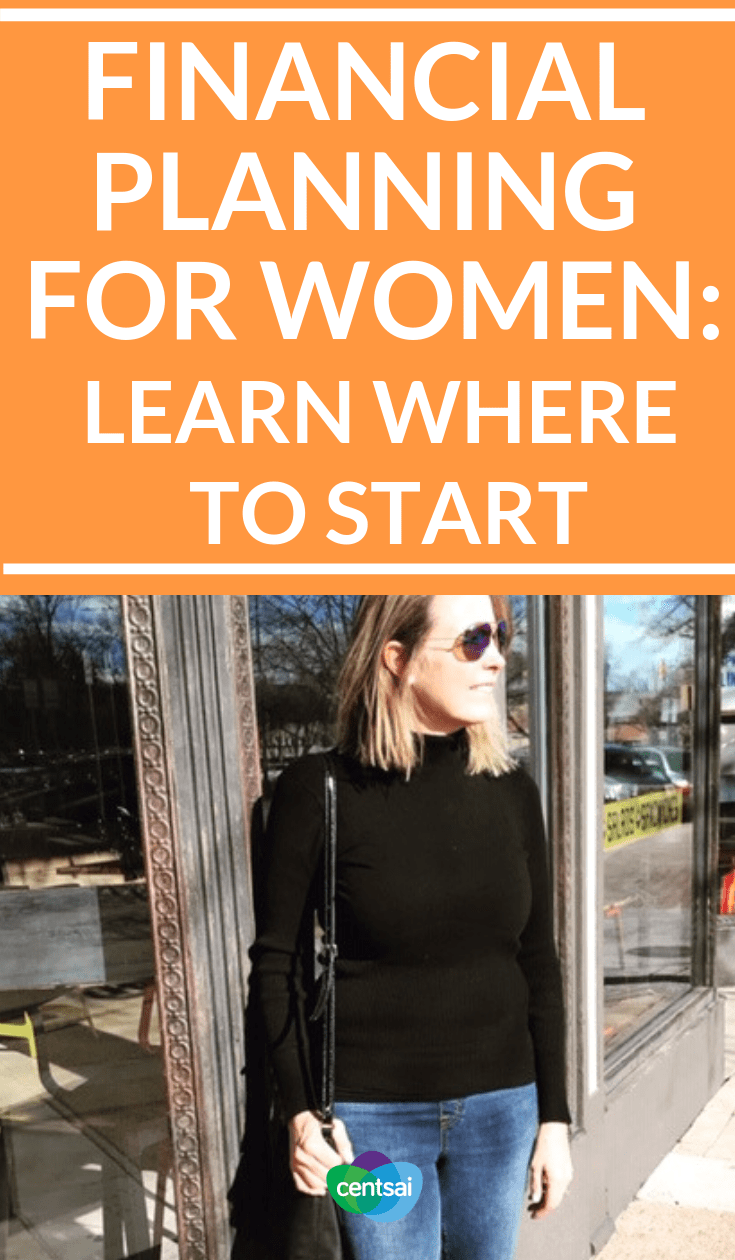
Amy Corcoran graduated from college two years ago. At 23 years old, she is ready to invest for her future, but doesn’t know where to start. She’s one of many women who struggle with a lack of resources and knowledge when it comes to financial planning.
“There aren’t many marketing campaigns that target younger women,” Corcoran says. “My bank should reach out to me about investing, but no one has.”

The Stats on Financial Planning for Women
Corcoran is one of the 29.5 million women in the American labor force who have a bachelor’s degree, based on data from a Pew Research study.
Despite the fact that more working women than men possess bachelor’s degrees, according to the study — and that The Fortune 500 has more female CEOs than ever before — women still tend to perform more poorly than their male counterparts on financial literacy tests, according to a study by the Teachers Insurance and Annuity Association of America.
“Women need basic education, even if it’s reading what’s available online,” says Maddy Dychtwald, a co-founder of Age Wave. “If your job has a 401(k), get invested in it. Any kind of fringe benefit available to you, take advantage.”
Learning to Invest: Julie’s Story
Julie works at an investment bank. The 30-something had nearly half a million dollars in assets. However, that tidy sum simply sat in a checking account, earning close to zero percent interest.
“Julie didn’t know what to do with it,” says wealth adviser Sahil Vakil, president of MYRA Wealth in New Jersey. “Having lived through a recession in her lifetime, Julie was fearful of investing in the markets.”
After evaluating Julie’s risk tolerance, Vakil took a cautious approach. He invested her money in a diversified portfolio of 12 exchange-traded funds. Julie’s $500,000 went proportionately into stocks, bonds, alternative assets, and real estate.
“The portfolio now aligns with Julie’s risk profile and is yielding more percentage-wise than it would just sitting in a checking account,” Vakil says. “There was a huge educational component that did not exist for Julie.”
“This is known as a financial literacy gap. No one had discussed financial or investment options with her in a very basic manner before.”
Financial literacy is essential. The more we know about a subject, the less scared of it we are. So look out for finance books, videos, and websites, like CentSai, that provide information for beginners.
Enrolling in Classes for Women
Donna Skeels Cygan, a certified financial planner in Albuquerque, New Mexico, advises women to enroll in financial planning classes. For example, thanks to a personal financial planning class she took in college, Kim, 26, now comfortably invests $200 a month directly into a Schwab brokerage account through automatic deductions.
“A formal class setting provides a familiarity with investing and financial products that would not otherwise be there,” says Cygan, the author of The Joy of Financial Security.
There are a plethora of free online courses on financial planning you can find on Coursera, edX, and Alison (including its Financial Literacy course).
Taking Advantage of Employee Benefits
Something else that can help women with financial planning? Sitting down with your employer’s benefits department to talk about what’s available to employees, what investment vehicles are accessible, and whether those vehicles are appropriate for you.
It’s important to ask about what type of pension plan your company offers. Or maybe ask about paid time off and different types of employee training. Think about what benefits mean the most to you and which ones would offer the most financial gain.
But most importantly, do not be afraid to ask. Being proactive will make you look stronger and more invested and involved in your work.
Employee Stock Purchase Plans
After graduating from college, Darla moved from the Midwest to New York City. There, she landed employment at a Fortune 500 company, where she earned a salary that gave her surplus cash. But the 27-year-old wasn’t taking full advantage of the perks her employer was offering.
Darla’s financial adviser, Kaya Ladejobi, suggested she enroll in the company’s employee stock purchase plan (ESPP) at $17 per share.
“If the company has given you a discount to buy company stock, you could potentially sell it at a profit at a later date if it grows,” says Ladejobi, a registered investment adviser in New York City.
Workers contribute to such plans through payroll deductions, which build up between the offering date and the purchase date. “Qualified ESPPs can give up to a 15 percent discount of market value of the stock,” Ladejobi says. “This is the most common scenario, and I’d recommend sticking with that 15 percent.”
Note that if you recently started at your job you may not be able to take full advantage of company stock options, as many companies have a “vesting period,” or a designated amount of time required to wait before purchasing the actual stock.
“Vesting is a legal term that essentially means to give or earn a right to either an immediate benefit or, more frequently, a future benefit in the form of a payment or the receiving of an asset,” says business law attorney David Reischer of LegalAdvice.com.
Additionally, owning stock in a single company, much less the one you work for, isn’t without its ups and downs. “The downside of stock options are that an employee may work many years before stock options vest, and the financial conditions of the company can change significantly over a long period,” Reischer adds.
Participating in an employer stock purchase plan is a smart financial planning move for women that can help close the pay gap between men and women — but don’t look at it as a panacea for wage parity.
The gender pay gap has narrowed since 1980, according to Pew Research Center data. However, it hasn’t changed much over the last 15 years. Women earned 75 to 80 percent of what men earned in 2018, according to the Bureau of Labor Statistics. To make matters worse, women of color tend to earn even less.
Meanwhile, the U.S. Census Bureau found that full-time, year-round working women earned 81 percent of what their male counterparts earned in 2018.
“By investing in a stock purchase plan at a discount, you have bought the stock at a price lower than market value,” Ladejobi says.
“This increases your profit margin versus if you had bought that stock at market value because even if the stock price stays the same, you’ve still made money. If the stock appreciates higher, then your profit grows.”
Health Savings Accounts
For female workers who have access to a high-deductible health plan, a health savings account (HSA) could potentially be both a tax perk and an investment perk.
An HSA allows an employee to deduct a designated amount of their paycheck tax-free, and put that amount into an account used for health-related expenses. The maximum amounts that can be contributed each year are $3,550 for individuals and $7,100 for families.
“An HSA is designed to pay for health-care costs,” advises Lorna Sabbia, head of retirement and personal wealth solutions at Bank of America Merrill Lynch. “But if you don’t have significant short-term health-care expenses, money contributed annually to it can accumulate over time,” she adds.
Plus Zero Hidden fees. It's Completely Free
Female Entrepreneurship
For women seeking a new challenge, or perhaps feeling dissatisfied with their current employment, launching a startup may be an option, according to Barbara Roberts, author of Women’s Entrepreneurial Journeys.
“My message to women is that it’s never too late to launch their own business,” says Roberts, an entrepreneur in residence at Columbia Business School. “Every woman has a unique problem that needs to be solved. If you’re unhappy in your job or behind on creating your own wealth, maybe following your passion and starting a business can solve those problems.”
This isn’t to say you shouldn’t give serious consideration to the challenges of starting your own business. Formulate a business plan, conduct market research, and consider whether your product or service is something people truly need. Consider taking advantage of the Small Business Association’s business guide resources before you launch your enterprise.
Financial Planning for Women and Millennials
Cygan believes that millennials’ distrust of the financial services industry is partly to blame for the lack of financial direction among young women. “There’s a huge disconnect between how to reach them and not just selling them something,” she says.
Less than half (42 percent) of Americans feel comfortable making investments, according to a study by investment education nonprofit FINRA. The same study also shows that the number of women with non-retirement investments has remained stagnant since 2015.
Despite these challenges, in the face of a lack of equal pay and longer expected lifespans, it’s more important than ever that industry professionals take the necessary steps to provide financial and educational tools to women — and that women seeking to deepen their financial literacy seize the opportunities available.







![[VIDEO] Preparing for Retirement for Women: 14 Ways to Start Now](https://centsai.com/wp-content/uploads/2019/12/rsz_women_retirement-ConvertImage-461x372.jpg)
![[VIDEO] How to Support Women-Owned Businesses](https://centsai.com/wp-content/uploads/2019/10/How-to-support-women-owned-businesses-Daye-Deura-e1571232573324-461x372.jpg)


